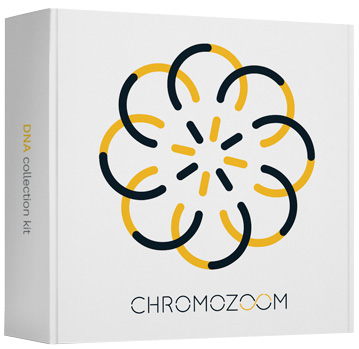Skin aging
The skin is constantly exposed to external and internal factors that affect its appearance, flexibility, and texture. These factors cause a change in structure and physiological change in the structure that manifests itself in appearance.
The first signs of skin surface aging begin to appear as fine lines from the 25th year onwards, with decreased collagen production, loss of volume and flexibility associated with the appearance of deep wrinkles as age progresses.
Ethnicity and skin type affect the rate and degree with which early signs of skin aging appear. Thus, genetic predisposition plays a key role in skin aging.
Collagen
Collagen is a protein that is the basic building material of connective tissue. There are many types, the most important is collagen type I, II, III, IV, and V. The most widespread is type I, which represents 90% of the collagen in organisms, is present in the skin, tendons, bones, and teeth. Collagen affects the appearance of our skin, hair quality, nails. As age progresses, collagen production decreases and its deficiency manifests itself through skin aging.
Extracellular matrix
The extracellular matrix (ECM) fills spaces between cells of different tissues. It consists mainly of collagen, proteoglycans, and glycoproteins (laminin, fibronectin). Collagen permits the mechanical strength of tissues, proteoglycans their elasticity, and adhesive components of intercellular mass, such as laminin and fibronectin, determine the specificity of cellular anchors in tissue. Thus, the extracellular matrix provides the flexibility and bulk of most tissues. Fibroblasts (basal cell connective tissue cells) are produced.
Factors associated with wrinkle formation and skin aging
Skin aging is a natural process affected by genetic (internal) and environmental (external) factors. Chronological aging associated with increasing age is influenced by genetic factors and is mainly associated with wrinkle formation, loss of volume and reduced skin elasticity. Many factors influence the external aging of the skin. The effect of UV radiation causing solar elastosis (degeneration of elastic fibers due to solar radiation), degradation of extracellular matrix (ECM) and wrinkle formation have the greatest influence. Chronic skin aging due to UV radiation is referred to as "photoaging".
Skin dermis contains extracellular matrix proteins such as collagen, elastin, and proteoglycans that provide skin firmness and elasticity. Skin aging is associated with skin cell aging (keratinocytes and fibroblasts), changes and extinction of ECM, and reduced synthesis and acceleration of collagen fibers in the skin.
Change in skin structure during aging
Solar (UV) radiation
In particular, solar radiation induces the formation of reactive oxygen radicals (ROS) and DNA damage. These changes lead to increased production of metalloproteinases (MMPs) and reduced collagen formation in keratinocytes and fibroblasts, which is reflected in the overall skin appearance. In addition to UV radiation, smoking, exposure to contaminated air, toxins and lack of sleep contribute to skin aging. Like UV radiation, these factors cause the formation of oxygen radicals and increase MMPs expression leading to ECM degradation and accelerate skin aging. The action of collagen degradation is crucial in the process of skin aging and wrinkling.
Since the 25th year of life, collagen levels have decreased by 1% every year, and the skin structure becomes weaker and more prone to wrinkle formation with increasing age. Over time, the skin loses elasticity and wrinkles deepen. There is reduced production of hyaluronic acid, skin cells less effectively bind water, and the skin is less hydrated. The skin becomes thinner and more susceptible to damage.
Thorough and proper skin care can help keep your skin healthy.
Regular cleaning is the first step toward effective skin care. It helps to remove impurities, sebum, and make-up and to better absorb the active ingredients in subsequently applied cosmetic products. Skin cleansing should be done in the morning and evening. Subsequent application of suitable cosmetic products to your specific skin type and condition helps to protect the facial skin from external influences and restore its healthy appearance.
Clinical features of skin aging are individual in each individual due to different genetic predispositions and different lifestyles.
Vitamin A, skin and pregnancy
Vitamin A, and therefore retinoids, play an important role in skin care by helping the healthy growth of young skin cells (keratinocytes) that make up 95% of the skin. Vitamin A is therefore very often one of the active ingredients of cosmetics. It has been found that, at higher concentrations, it has a markedly teratogenic effect (may damage the developing fetus). There should be no risk in skin application, but their use (including cosmetic products) during pregnancy should be carefully consulted with a physician.
